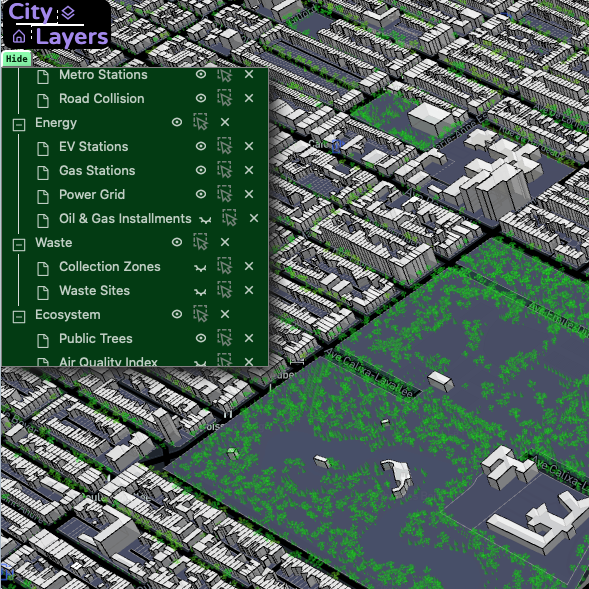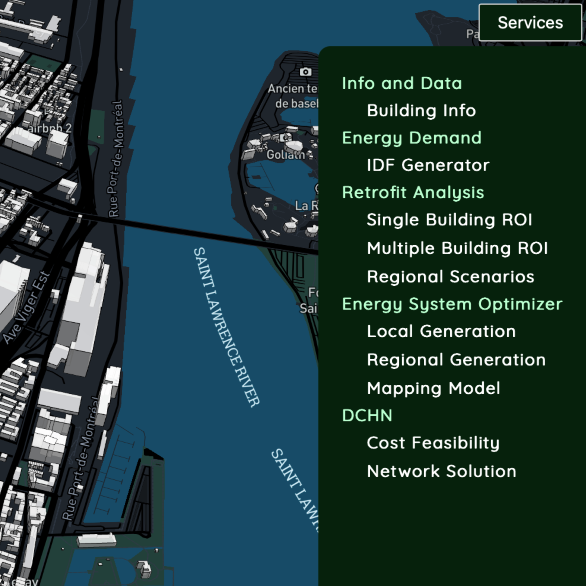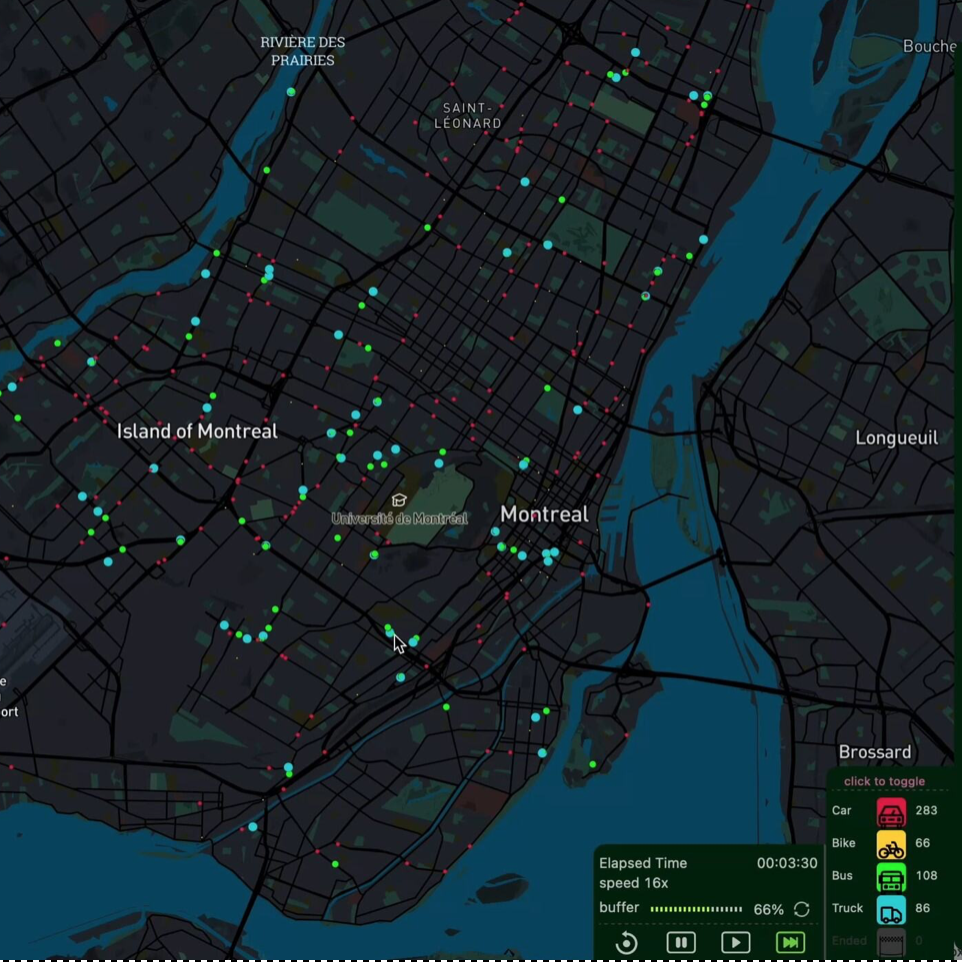CITYlayers
All your urban data at a click.

Part of the TOOLS4CITIES suite, this browser-based tool visualizes a digital twin of a city, across multiple domains of data and allows sustainability-related simulations to be run at a click of the mouse.
Key project details
| Research lead |
Canada Excellence Research Chair (CERC) in Smart, Sustainable and Resilient Communities and Cities Founding co-director, Next-Generation Cities Institute |
| Researchers involved |
Lead, Zero Carbon Communities and CITYlayers Guillermo Gutierrez Morote, Koa Wells Core software team |
| Years | Ongoing |
| Key words | #digitaltwins |
City scale scenarios

Data Domains
Select the data you are interested in, from buildings to transport, energy to waste, trees to air quality, and overlay them spatially to see correlations & connections.
Uses available public data from multiple sources and new datasets are regularly added.

Services
Access to simulation services is quick and easy - choose the one you need, then click directly into the area of the city you wish to run the simulation on. This could be a single building, a neighbourhood, or even the entire city. Simulations run on our powerful remote servers and the results returned to you in a few minutes, presented in clear user-friendly reports.

Transportation
We employ traffic flow simulations to allow energy and emission-based scenarios to be run across different areas of the entire transport network and also across different modes of transportation.

